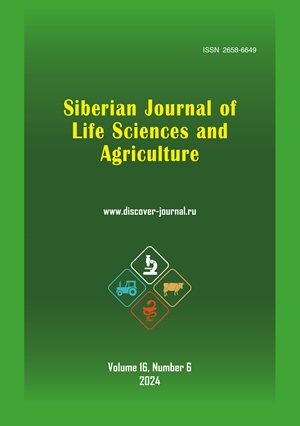ПЛАТФОРМЫ ЗА ПРЕДЕЛАМИ ЧЕЛОВЕКОЦЕНТРИЧНОГО ПОДХОДА: ИСПОЛЬЗОВАНИЕ ПЛАТФОРМ ДЛЯ ВЗАИМОДЕЙСТВИЯ ЛЮДЕЙ С ДРУГИМИ ВИДАМИ
Аннотация
Обоснование. Платформы обычно рассматриваются как площадки для взаимодействия между людьми. Такое восприятие платформ представляет собой проявление человекоцентричного специецистского подхода, который в настоящее время постепенно уступает свое место в социальных науках неспециецистской логике. По этой причине большой интерес может представлять анализ возможности использования платформ нечеловеческими живыми существами.
Цель данного исследовательского эссе заключается в том, чтобы выйти за пределы специецистского подхода и определить, могут ли нечеловеческие живые существа присутствовать на платформах в качестве их сторон.
Материалы и методы: теория, использованная в данной работе, основана на ключевых характеристиках платформ, описанных в литературе (сетевые эффекты, конкурентное сотрудничество, автономия пользователей). Работа является концептуальной и не опирается на эмпирические данные.
Результаты исследования. Данная работа показывает, что платформы могут использоваться для взаимодействия людей с другими видами. Такие межвидовые платформы могут создаваться по инициативе как людей, так и животных. Люди и другие виды живых существ могут находиться на одной стороне платформы. Эти результаты показывают, что платформенный подход может быть использован для анализа и организации взаимодействий между людьми и другими видами животных. Помимо нового взгляда взаимодействия людей и других видов, полученные результаты также позволяет лучше понять природу платформенной трансформации. Данное исследование уточняет природу участия сторон в платформенном взаимодействии и показывает, что одна из сторон может не быть заинтересована в нем и становится стороной платформы против своей воли. Кроме того, платформенная трансформация может быть принудительной для владельца инфраструктуры, используемой в качестве платформы, и реализованной внешними акторами. Принудительная платформизация может рассматриваться как недобросовестная платформенная практика. Хотя собственники инфраструктуры могут быть заинтересованы в платформенной трансформации, им необходимо принимать меры по защите от принудительной платформизации.
Заключение. Данная работа содержит два основных результата. Во-первых, она обогащает наше понимание взаимодействий между людьми и другими видами, показывая, что оно может быть основано на платформенном подходе. Во-вторых, она вносит вклад в исследование платформ, поскольку она идентифицирует новые модели платформенной трансформации, которые пока не были описаны в существующей литературе. Перспективным направлением дальнейших исследований является определение того, могут ли существовать платформы без участия человека.
EDN: TTKBGD
Скачивания
Литература
Agafonow A., Perez M. In search of a non-anthropocentric middle-range theory of the firm: On how the Patagonia Purpose Trust granted a controlling stake to nature. Ecological Economics, 2024, vol. 217, 108076. https://doi.org/10.1016/j.ecolecon.2023.108076
Arcari P. Normalised, human-centric discourses of meat and animals in climate change, sustainability and food security. Agriculture and Human Values, 2017, vol. 34, pp. 69-85. https://doi.org/10.1007/s10460-016-9697-0
Bakharev V., Mityashin G., Stelmashonok E., Stelmashonok V., Chargasiya G. Trends of evolution of food security: digital transformation, social entrepreneurship and human dignity. Siberian Journal of Life Sciences and Agriculture, 2023, vol. 15(2), pp. 363-391. https://doi.org/10.12731/2658-6649-2023-15-2-363-391
Bernstein A., Sivkov D. Yu. Resurrection is possible not only for people. The Russian Peasant Studies, 2024, vol. 9(3), pp. 119-126. https://doi.org/10.22394/2500-1809-2024-9-3-119-126
Caiza-Villegas A., Ginn F., van Hoven B. Learning to live with synanthropic bats: Practices of tolerance and care in domestic space. Social & Cultural Geography, 2023, vol. 25(6), pp. 909–927. https://doi.org/10.1080/14649365.2023.2209054
Clarke A., Parsell C. Resurgent charity and the neoliberalizing social. Economy and Society, 2022, vol. 51(2), pp. 307-329. https://doi.org/10.1080/03085147.2021.1995977
Corciolani M., Dalli D. Gift-giving, sharing and commodity exchange at Bookcrossing.com: new insights from a qualitative analysis. Management Decision, 2014, vol. 52(4), pp. 755-776. https://doi.org/10.1108/MD-03-2012-0241
Cowden B. J., Young S. L. The copycat conundrum: The double-edged sword of crowdfunding. Business Horizons, 2020, vol. 63(4), pp. 541-551. https://doi.org/10.1016/j.bushor.2020.03.012
Cudworth E. Beyond speciesism: Intersectionality, critical sociology and the human domination of other animals. In The rise of critical animal studies: From the margins to the centre, eds. R. Twine, and N. Taylor. New York: Routledge, 2014, pp. 19–35. https://doi.org/10.4324/9780203797631
Dolfsma W., Spithoven A. “Silent Trade” and the Supposed Continuum between OIE and NIE. Journal of Economic Issues, 2008, vol. 42(2), pp. 517–526. https://doi.org/10.1080/00213624.2008.11507161
Evans D.S., Schmalensee R. Multi-sided Platforms. In: The New Palgrave Dictionary of Economics. Palgrave Macmillan, London, 2017, pp. 1-9. https://doi.org/10.1057/978-1-349-95121-5_3069-1
Greenebaum J., Sanders C.R. Human-Non-Human Interaction. In The Blackwell Encyclopedia of Sociology, G. Ritzer (Ed.). 2015. https://doi.org/10.1002/9781405165518.wbeosh050.pub2
Hagiu A. Merchant or Two-Sided Platform. Review of Network Economics, 2007, vol. 6(2), pp. 115-133. https://doi.org/10.2202/1446-9022.1113
Hagiu A., Altman E. J. Finding the Platform in Your Product. Harvard Business Review, 2017, vol. 95(4), pp. 94-100.
Hagiu A., Bruno J., Wright J. Creating Platforms by Hosting Rivals. Management Science, 2020, vol. 66(7), pp. 3234-3248. https://doi.org/10.1287/mnsc.2019.3356
Hagiu A., Wright J. Multi-sided platforms. International Journal of Industrial Organization, 2015, vol. 43, pp. 162-174. https://doi.org/10.1016/j.ijindorg.2015.03.003
Huff D. Archaeological Evidence of Zoroastrian Funerary Practices. In Zoroastrian Rituals in Context. Leiden, The Netherlands: Brill, 2004. https://doi.org/10.1163/9789047412502_027
Hutter M. The Impurity of the Corpse (nasā) and the Future Body (tan ī pasēn): Death and Afterlife in Zoroastrianism. Deuterocanonical and Cognate Literature Yearbook, 2009, vol. 2009(2009), pp. 13-26. https://doi.org/10.1515/9783110208818.13
Johnston J. Transspecies liminality: unpacking the politics and patchy legitimization of urban human-cat relations. Social & Cultural Geography, 2023, vol. 25(6), pp. 928–946. https://doi.org/10.1080/14649365.2023.2209055
Karhu K., Gustafsson R., Lyytinen K. Exploiting and Defending Open Digital Platforms with Boundary Resources: Android’s Five Platform Forks. Information Systems Research, 2018, vol. 29(2), pp. 479-497. https://doi.org/10.1287/isre.2018.0786
Lehtonen T.-K., Pyyhtinen O. From Trash to Treasure: Valuing Waste in Dumpster Diving. Valuation Studies, 2020, vol. 7 (2), pp. 197-220. https://doi.org/10.3384/VS.2001-5992.2020.7.2.197-220
Lundström M. The Political Economy of Meat. Journal of Agricultural and Environmental Ethics, 2019, vol. 32, pp. 95-104. https://doi.org/10.1007/s10806-019-09760-9
Lundström M. “We do this because the market demands it”: alternative meat production and the speciesist logic. Agriculture and Human Values, 2019, vol. 36, pp. 127–136. https://doi.org/10.1007/s10460-018-09902-1
Luniak M. Synurbanization – adaptation of animal wildlife to urban development. The 4th International Symposium On Urban Wildlife Conservation. Shaw et al., Eds. 2004, pp. 50-55. https://costaricasilvestre.go.cr/wp-content/uploads/2019/04/1f_37_synurbization-adaptation-of-animal-wildlife-to-urban.pdf
Mair J., Reischauer G. Capturing the dynamics of the sharing economy: Institutional research on the plural forms and practices of sharing economy organizations. Technological Forecasting and Social Change, 2017, vol. 125, pp. 11-20. https://doi.org/10.1016/j.techfore.2017.05.023
MaMing R., Lee L., Yang X., Buzzard P. Vultures and sky burials on the Qinghai-Tibet Plateau. Vulture News, 2016, vol. 71, pp. 22-35. https://doi.org/10.4314/vulnew.v71i1.2
Messmer T. A. The emergence of human–wildlife conflict management: turning challenges into opportunities. International Biodeterioration & Biodegradation, 2000, vol. 45(3-4), pp. 97-102. https://doi.org/10.1016/S0964-8305(00)00045-7
de Moraes Farias P. F. Silent Trade: Myth and Historical Evidence. History in Africa, 1974, vol. 1, pp. 9-24. https://doi.org/10.2307/3171758
Morrow O. Sharing food and risk in Berlin’s urban food commons. Geoforum, 2019, vol. 99, pp. 202-212, https://doi.org/10.1016/j.geoforum.2018.09.003
Nijman V., Morcatty T., Smith J. H., Atoussi S., Shepherd C. R., Siriwat P., Nekaris A. I. Bergin D. Illegal wildlife trade – surveying open animal markets and online platforms to understand the poaching of wild cats. Biodiversity, 2019, vol. 20(1), pp. 58–61. https://doi.org/10.1080/14888386.2019.1568915
Pyyhtinen O., Lehtonen T.-K. The gift of waste: The diversity of gift practices among dumpster divers. Anthropological Theory, 2023, vol. 23(2), pp. 209-231. https://doi.org/10.1177/14634996221117318
Reese L. A. Community factors and animal shelter outcomes. Journal of Applied Animal Welfare Science, 2022, vol. 27(1), pp. 105–123. https://doi.org/10.1080/10888705.2022.2063021
Reinartz W., Wiegand N., Wichmann J. R. K. The Rise of Digital (Retail) Platforms. University of Cologne, Cologne. 2019. https://marketing.uni-koeln.de/sites/marketingarea/Document/Research/2019_IFH_Whitepaper_ENG_Reinartz_Wiegand_Wichmann.pdf (accessed 07.01.2024).
Savio G. Organization and Stigma Management: A Comparative Study of Dumpster Divers in New York. Sociological Perspectives, 2017, vol. 60(2), pp. 416-430. https://doi.org/10.1177/0731121416632012
Skrzypek K., Zawojska E. What characteristics of dogs help them stay shorter in shelters? Evidence from a polish animal shelter. Journal of Applied Animal Welfare Science, 2024, pp. 1–19. https://doi.org/10.1080/10888705.2024.2308171
Soulsbury C. D., White Piran C. L. Human–wildlife interactions in urban areas: a review of conflicts, benefits and opportunities. Wildlife Research, 2016, vol. 42, pp. 541-553. https://doi.org/10.1071/WR14229
Valença T., Resende B., Savalli C. Human–Wildlife Interactions with Different Species in a Brazilian Park: A Naturalistic Approach. Anthrozoös, 2021, vol. 34(5), pp. 615–631. https://doi.org/10.1080/08927936.2021.1914443
Veisdal J. The dynamics of entry for digital platforms in two-sided markets: a multi-case study. Electronic Markets, 2020, vol. 30, pp. 539–556. https://doi.org/10.1007/s12525-020-00409-4
Woodburn J. Silent trade with outsiders: Hunter-gatherers’ perspectives. HAU: Journal of Ethnographic Theory, 2016, vol. 6(2), pp. 475-496. https://doi.org/10.14318/hau6.2.030
Yablonsky S. A. Multi-sided Platforms: Current State And Future Research. Russian Management Journal, 2020, vol. 17(4), pp. 519–546. https://doi.org/10.21638/spbu18.2019.407
York R., Mancus P. The Invisible Animal: Anthrozoology and Macrosociology. Sociological Theory, 2013, vol. 31(1), pp. 75-91. https://doi.org/10.1177/0735275113477085
Zhao Y., Chen P., Kong X. More than human consumption space: human–animal encounters and relationships in cat cafés in Shanghai. Social & Cultural Geography, 2023, vol. 25(6), pp. 872–890. https://doi.org/10.1080/14649365.2023.2206791
Zvonova E. E. Animal immortality in Russian cosmism: Scientific and religious aspects. The Russian Peasant Studies, 2024, vol. 9(3), pp. 92-104. https://doi.org/10.22394/2500-1809-2024-9-3-92-104
Просмотров аннотации: 43 Загрузок PDF: 15
Copyright (c) 2024 Ivan D. Kotliarov

Это произведение доступно по лицензии Creative Commons «Attribution-NonCommercial-NoDerivatives» («Атрибуция — Некоммерческое использование — Без производных произведений») 4.0 Всемирная.





















































